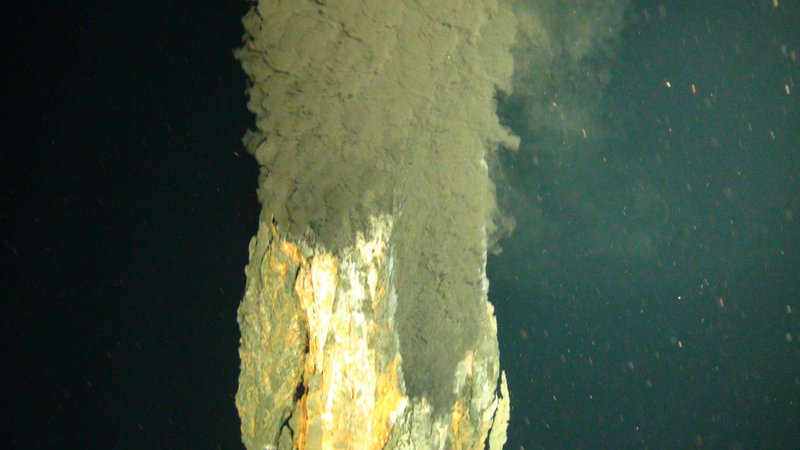LONDON – Scientists using a remote-controlled submarine have discovered the deepest known volcanic vent and say the superheated waters inside could contain undiscovered marine species and perhaps even clues to the origin of life on earth.
Experts aboard the RRS James Cook said they found the underwater volcanic vent more than three miles beneath the surface of the Caribbean in an area known as the Cayman Trough, a deep-sea canyon that served as the setting for James Cameron’s underwater thriller “The Abyss.”
Geologist Bramley Murton, the submersible’s pilot, said exploring the area was “like wandering across the surface of another world,” complete with spires of multicolored mineral deposits and thick collections of fluorescent blue microorganisms thriving in the slightly cooler waters around the chimneys.
The scenes “were like nothing I had ever seen before,” Murton said.
Volcanic vents are areas where sea water seeps into small cracks that penetrate deep into the earth’s crust — some reaching down more than a mile. Temperatures there can reach 750 degrees Fahrenheit, heating the water to the point where it can melt lead.
The blazing hot mineral-rich fluid is expelled into the icy cold of the deep ocean, creating a smoke-like effect and leaving behind towering chimneys of metal ore, some two stories tall. The spectacular pressure — 500 times stronger than the earth’s atmosphere — keeps the water from boiling.
The environment in volcanic vents may appear brutal: the intense heat and pressure combines with toxic metals to form a highly acidic undersea cocktail.
But vents host lush colonies of exotic animals such as blind shrimp, giant white crabs, and even large red-lipped tubeworms whose lack of any apparent digestive system once puzzled scientists.
At the base of this ecosystem are chemical-eating bacteria who draw on the hydrogen sulphide and methane erupting from the vents to make food.
“Although those are lethally hostile conditions for surface-dwellers like us, life exists at all depths in the oceans, right down to the bottom of the deepest trenches,” said marine biologist Jon Copley in an e-mail interview from the James Cook.
“We’re still figuring out how,” Copley said.
Because the vent area is nearly half a mile deeper than any previously discovered, scientists speculate that it could be the hottest ever found.
Study of the vent could yield a variety of new insights into the history of the ocean, the physics of so-called “supercritical fluids” — liquids so hot they act like gasses — and the chemical makeup of the deep ocean.
Send questions/comments to the editors.



Success. Please wait for the page to reload. If the page does not reload within 5 seconds, please refresh the page.
Enter your email and password to access comments.
Hi, to comment on stories you must . This profile is in addition to your subscription and website login.
Already have a commenting profile? .
Invalid username/password.
Please check your email to confirm and complete your registration.
Only subscribers are eligible to post comments. Please subscribe or login first for digital access. Here’s why.
Use the form below to reset your password. When you've submitted your account email, we will send an email with a reset code.